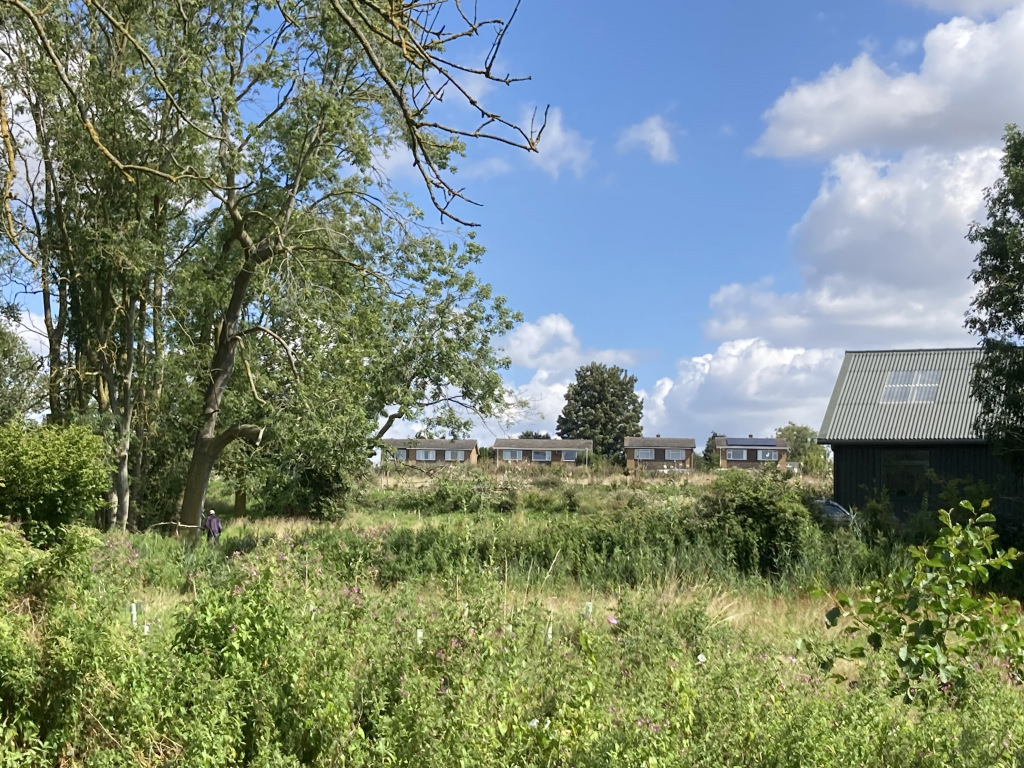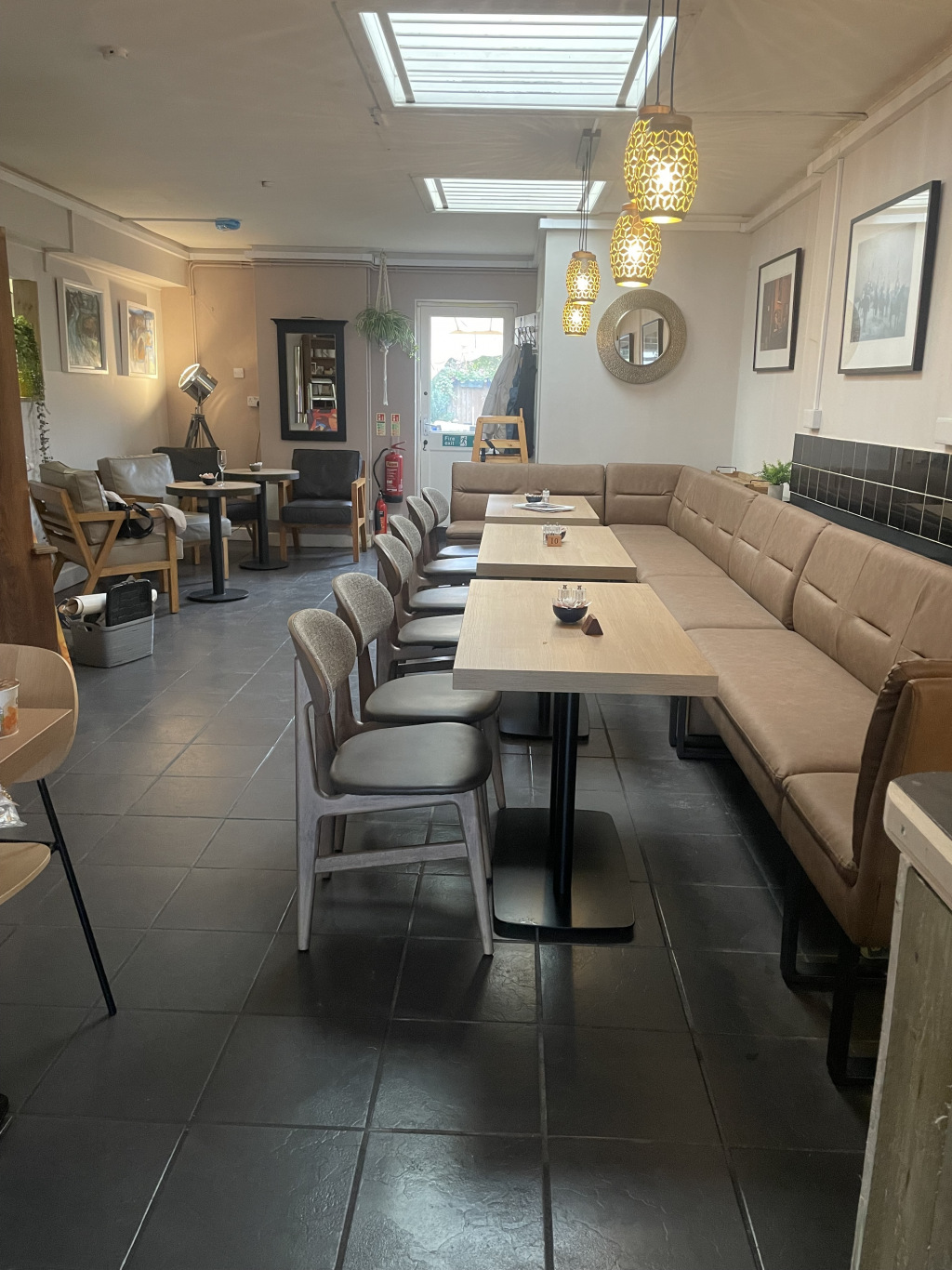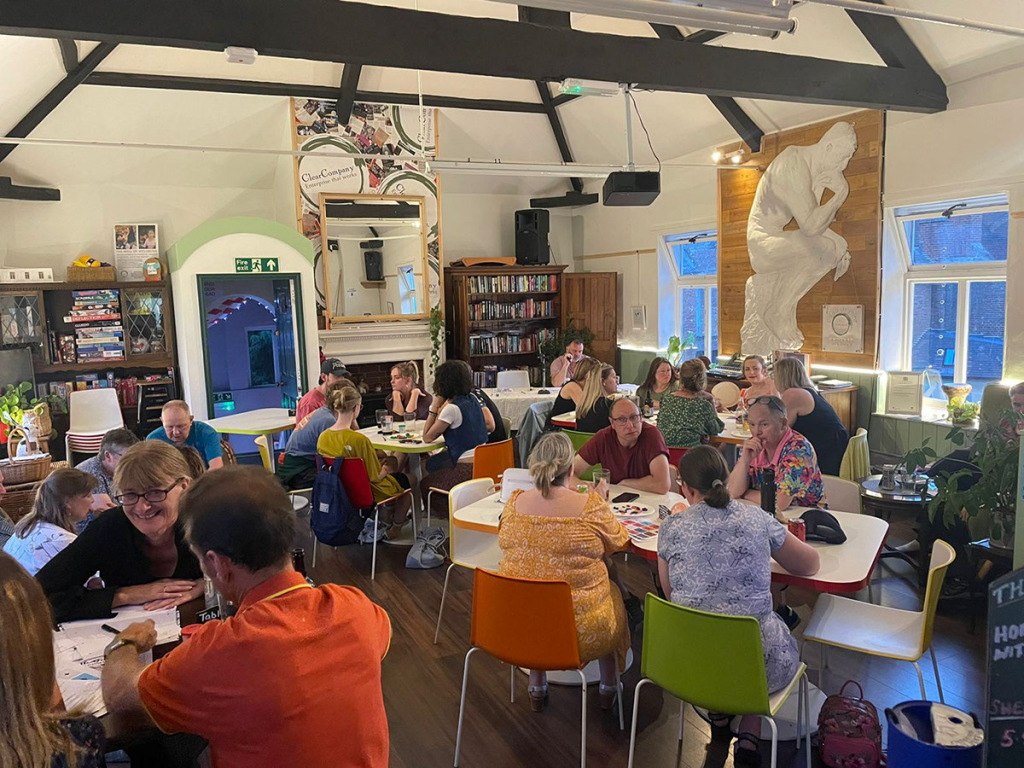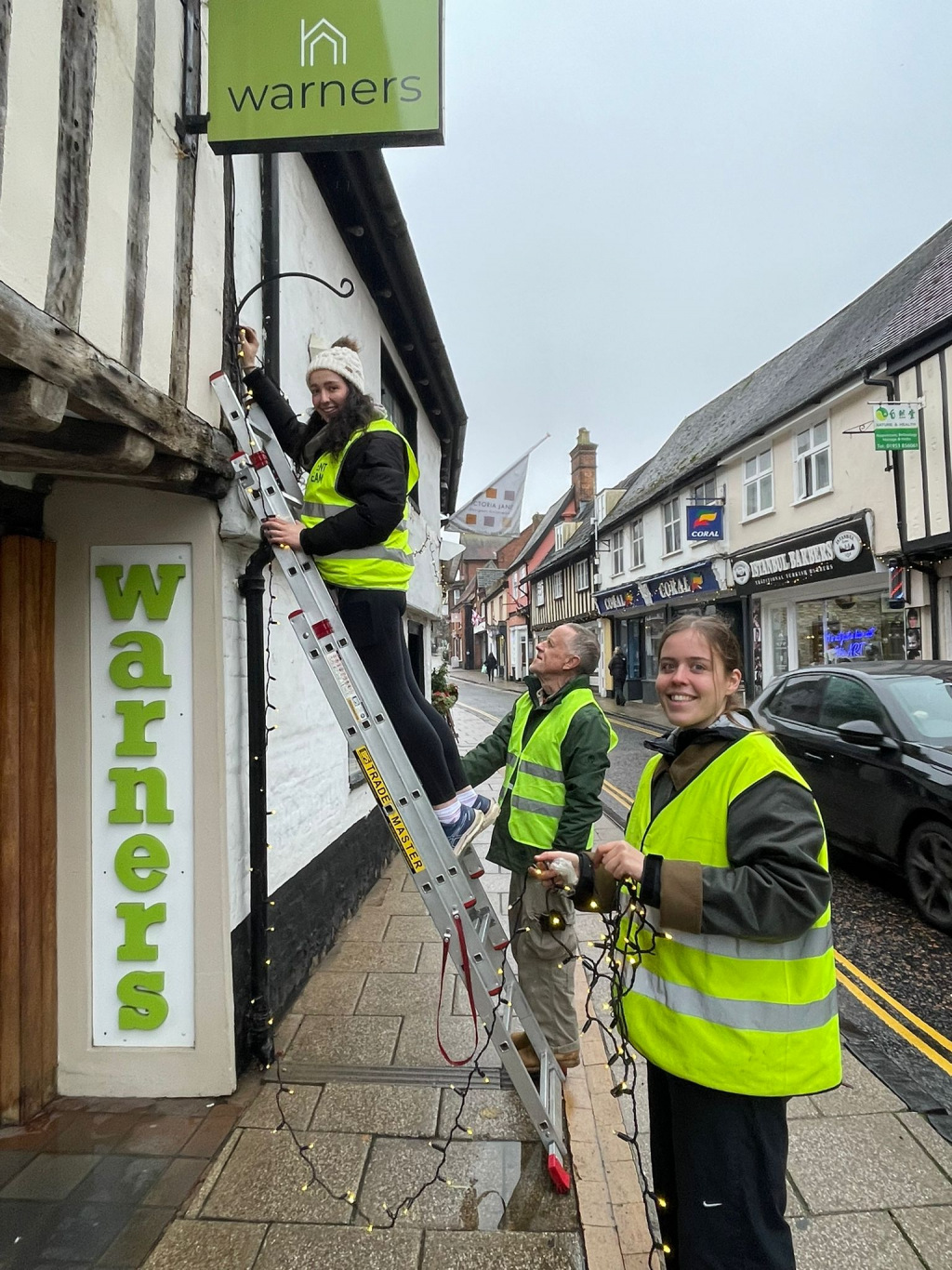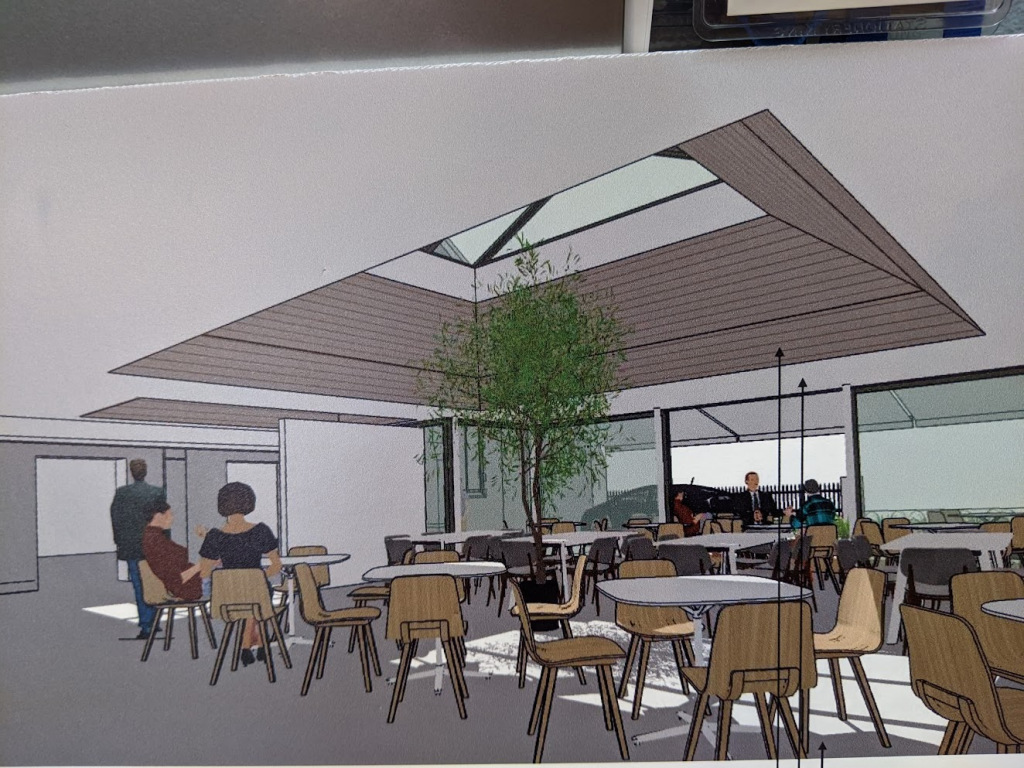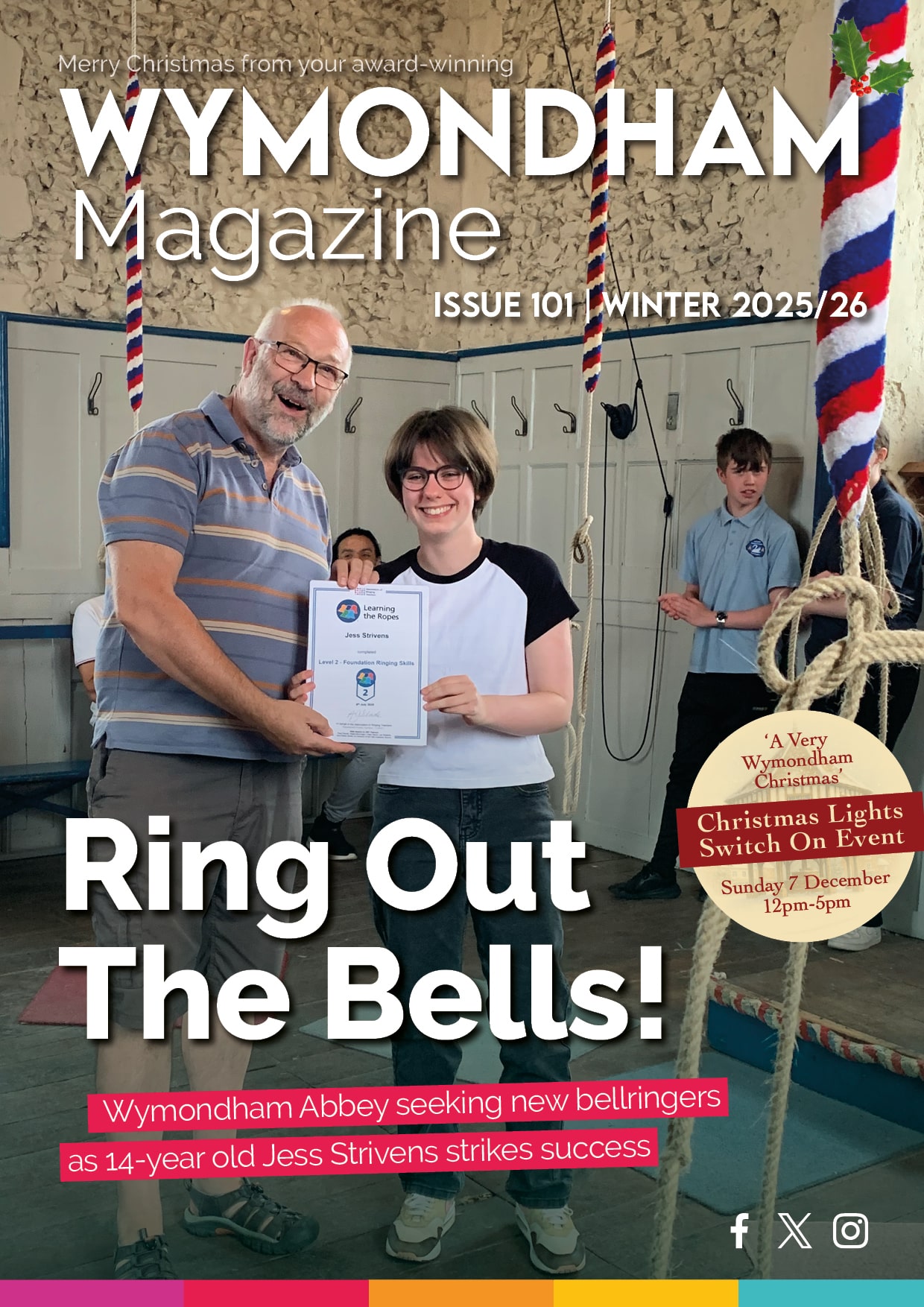A planning application has been submitted to South Norfolk Council to change the use of agricultural land and establish a rewilding nature reserve on Chapel Lane. The proposal also asks for permission to install five glamping pods for all year round use. Residents along Chapel Lane have expressed concern that the camping site will adversely affect the nature of the high heritage value views along the Tiffey Valley. The Wymondham Neighbourhood Plan, which received an 85% majority in support when voted on in June, has as objective 3: ‘seek to maintain the setting of Wymondham as a discrete town surrounded by high quality countryside.’
Whilst the proposed site will endeavour to be screened from traffic travelling along Chapel Lane, walkers on the riverside footpath and passengers on the Mid Norfolk Railway would have clear views of the pods, field kitchen and communal straw roundhouse. Some residents' views will also be impacted by the pods and some feel they are not in keeping with Wymondham Town values.
One resident said: “I am opposed to the glamping units. A large agricultural building was constructed a few years ago which seemed excessively large for the existing land management undertaken, yet it was approved. Now it is suggested the facilities within this building are to be used by the occupants of the camping units. You do wonder if this was planned from the very beginning. What is to come next, a building for the landowner to live permanently on site perhaps?”
He continued: “The application states it is for 5 glamping pods. Each building is nearly 7 metres long and similar in size to lodges, so not small eco pods. Their original proposal was for 12 units. Does this indicate there would have been more units if they felt it would have got approval? Yet again it appears the Wymondham residents have a battle on their hands to prevent the Tiffey Valley landscape being irreparably damaged.”
Further concerns noted include increased traffic flow, noise pollution (particularly late night noise) and the potential impact upon wildlife. The Environmental Quality Team has objected to the application in its current form, due to a lack of information on any proposed lighting, how noise will be managed nor if there is any risk from contamination.
Whilst the applicant is seeking to minimise the impact upon the area, some residents fear that if the proposal is granted it will lead to requests to increase the number of pods and possibly establish caravan and camping pitches in the future.
The closing date for submissions regarding the application is the 11th August and anyone who has any comments should contact South Norfolk Council Planning Department by emailing planning@southnorfolkandbroadland.gov.uk quoting reference 2023/2007.
The following is an excerpt from the Design and Access Statement submitted with the planning application: Our farm is 37 acres of pasture, which until late 2019 was intensively sheep grazed. Since becoming custodians we are trying to manage it differently, to enhance biodiversity and ecological richness by re-wilding some areas, creating ponds and wetlands, encouraging wildflower meadows, and through extensive native hedgerow and tree planting (7,000 trees self-planted and self-funded during the last 2 years). We’re working with Norfolk Wildlife Trust and Norfolk Rivers Trust to help realise our vision and although we have continued with sheep farming at a smaller scale, it is not commercially viable. To create an income to sustain the work and also to develop local employment opportunities we need to look to some form of eco-tourism.
At a community level we would love to work with primary schools, forest schools, arts initiatives working in the landscape and other community groups. At a commercial level however, a glamping site seems the most realistic and low impact way of achieving financial sustainability. In the attached plans, and photos I have therefore tried to indicate a scheme for modest scale glamping. I believe it can happily be accommodated in a fairly compact form, concentrated near the existing barn. Planting of mixed species native hedgerow over the course of the last 2 years will very quickly mitigate against any visual impact, though mostly I am proposing to take advantage of a natural depression in the landscape which shields most of the site from the high ground of Chapel Lane.
The access point is to be shared with our regular farm track, which has a properly splayed approach from the road. It is however dismaying that although we are in a residential area, County Highways determined to change the speed limit a few years ago from 30mph to 40mph, against the clear wishes of local residents and the fact that people use Chapel Lane to walk down to the nearby allotments. Apparently Highways are reviewing or monitoring this decision. That aside, the farm offers some wonderful open countryside, with unspoilt views across the Tiffey Valley to the medieval Wymondham Abbey.
It has the benefit of a diverse landscape, of being an active rewilding project and yet being right on the doorstep of a thriving market town, with the facility for campers to visit its shops and hostelries during their stay. I would be minded to work with local businesses for any catering and hope that the venture could put us in a position where we could employ someone to help us. My proposal is for a rather eclectic mix of traditional tents and rustic/agricultural structures. I would like to steer away from generic glamping ‘pods’ which I fear can look more like a holiday park than an organic collection of makeshift spaces with the landscape. (I grew up in a tumble down thatched cottage, originally trained as an architect and have spent many years working with my hands on older buildings).
Addendum - July 2023 Since initiating our pre-application in Spring 2022, we have continued the work of establishing ecologically diverse habitat. Last summer was a full-time job to keep plantings alive through the extended drought, but this winter we have added a further 4,000 mixed native saplings. It is a constant struggle to keep newly created hedgerows weeded, mulched and watered as well as protected from deer, rabbit, and ant nests. The Principal Ecologist from Norfolk Wildlife Services (sister company to Norfolk Wildlife Trust) visited this Spring, to conduct a survey in support of this application, and was unequivocal in his commendation and admiration for the works we have already undertaken, with very little resources. Some of the plantings from the first year (winter 2020/21) are really starting to establish, with curious blackbirds and sparrows already starting to hop among the nascent hedgerow, and dragon flies and damsel flies abundant on the chalk seam fed ponds.
The delays in getting small scale camping/glamping off the ground, largely due to Nutrient Neutrality rulings, have impacted us badly, almost to the point of needing to abandon the project. Nevertheless, the encouragement of local neighbours, some of whom have even volunteered their practical help, motivates us to keep going, and realise the work as a community asset. It has also refined our thinking about the kind of accommodation and experience we want to offer. Most glamping sites appeal to the notion of boutique luxury and privacy, whereas we are more interested in notions of community and engagement with the landscape. The units would be simple but rugged, self-built for all year-round use and longevity. They would be sited fairly proximate to one another, centred around an outdoor field kitchen, and possibly a small strawbale roundhouse hut. Thus we would like to encourage the exchange of ideas, both from individuals and couples but also hopefully small groups - perhaps running ecology training courses, or therapeutic and creative retreats.
Since our original proposal, and as a consequence of the pre-application consultation, we have relocated the glamping scheme to an area discreetly set back from the river and completely hidden from public view. As well as addressing noise (attenuation graphs) and lighting concerns (best practice Dark Sky policies will be employed), we have also reduced the size - from an original 12 to just 5 units (as would ordinarily be accepted under permitted development). Integral to the scheme is the permanent setting aside of 3 acres of grazing land to become an informal nature reserve - a combination of tree planting, pond creation and re-wilding areas, complete with bee hives and dead hedges as extensive habitat creation. As well as serving glamping customers, we envisage this area to be of use for school visits and therapeutic organisations we are making links with.




